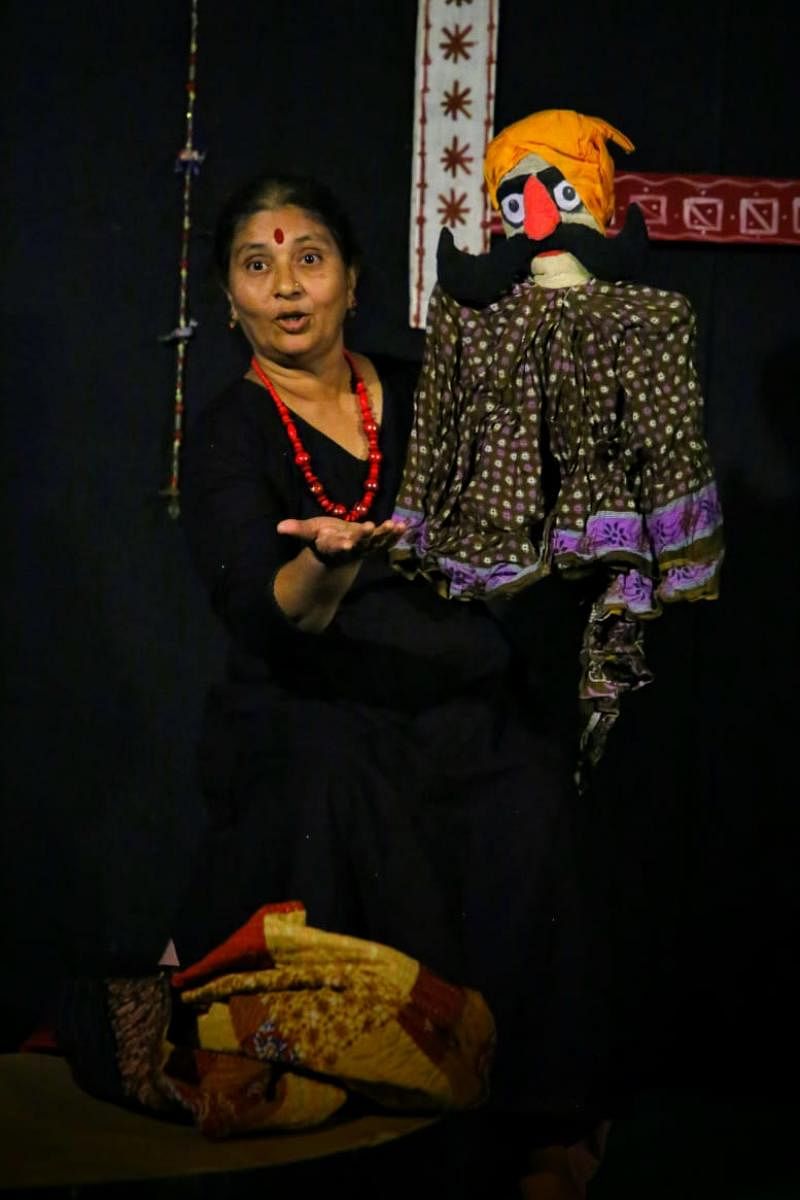Solo plays and women’s voices





Women in theatre have been driving a social movement through powerful solo performances. Featuring issues such as caste discrimination, harassment, gender bias and forced marriages, some have taken instances from ancient mythological texts, wars and age-old traditions.
Solo plays have all the key elements of theatre, despite having just one artiste to play several characters.
There is a historic association of women’s issues with this form of theatre. Founded by Nobel laureate and Italian thespian Dario Fo in the 1970s, monologues like, ‘A Woman Alone’, ‘Medea’, ‘The Same Old Story’ and ‘Rise and Shine’ delved into common problems that women faced in that time.
From then on, senior artistes like Lakshmi Chandrashekar have performed the women-centric play ‘Hennallave’, among others, abroad over the years.
Now such solo performances have moved beyond the confines of auditoriums and rangamandiras to houses, schools and colleges in Karnataka. Actors like Manjula Subrahmanya, Vani Periodi, Anaghashri, Ahalya Ballal and others have also gained prominence for their solo performances.
Vani Periodi, an artiste, trainer and member of the Karnataka Rajya Mahila Dourjanya Virodhi Okkuta believes that a solo play is best when presented to individuals or small groups consisting of 20-50 people.
“I regularly perform two plays 'Durga' and 'Neeli Ribbon', each about ten minutes long, that talk about domestic and sexual violence against women, at workshops organised for women, transgenders and sex workers. Many have started performing these dramas in different dialects,’’ she shares.
Vani first performed the play ‘Bakhi Itihasa’, which depicts how women handled instances of violence, three decades ago. She has presented over 200 shows of this play so far.
Philosophy
The evolving world of mono-act plays has also been inspired by Kannada literature. ‘Bakulada Baagilininda’ a book by Sudha Adukkala, a well-known Kannada writer, has been adapted into single-act plays. The book has scenes based on 22 different women characters. The chapters on Ahalya, Ambe, Shantala and others have been adapted into solo plays.
In the plays, Adukkala shares that the solitude of women should not be viewed with pity, but considered with pride and respect. “Why can’t we think that Radha lived happily even after Krishna left her?’’ she asks. Adukkala’s plays discuss the self-sufficiency of women in tackling problems in society.
“If we want to highlight any issue in a one-act play, we can tell it intensely through one artiste and all angles can be shown,’’ opines Adukkala.
Siri Vanalli, an award-winning actor agrees, “People link theatre to many artistes performing on stage, but a single actor handles all characters in a monodrama. Here, we play five to six roles and shift from each character quickly.’’ Siri’s first mono-act play was a performance of Adukkala’s ‘Anandabhavini’, directed by Shripad Bhat.
The play depicts a striking one-sided conversation through letters written between a woman from Kodagu and her boyfriend in England. When she visits Japan with her father during World War II, the lovers are unable to exchange letters for four years. She later tells the audience about the dire consequences of war on society.
Solo or double-act plays have become popular after the pandemic, according to senior theatre person Shripad Bhat. “After Covid broke out in the state, the theatre industry was shattered. So we worked on the concept of minimalism to cut down costs and focused more on solo or double-act plays,” he says.
Bhat recently experimented and brought out a 1.25-hour-long play with two artistes called ‘Madhavi’, which is based on a scene in Mahabharata. Madhavi is believed to be the first woman to come out of the bondage of marriage to lead her own life. Adukkala penned the lines for the play.
The play has already been staged more than 30 times in Mysuru, Shivamogga, Kalaburagi, Dharwad, Sirsi and Madikeri. Shripad Bhat has directed six mono-act plays.
Challenges
While the mono-acting form of theatre is conducive to expressing societal problems that women may face, challenges are aplenty. “Though directors are different for each play, the story is told by one person, and it becomes tricky for actors to diversify and enact for one hour,” says Arehole Sadashiva Rao, who runs the Arehole Pratistana Institution, a theatre study centre.
Since the plays use a similar set, location and properties for each scene, they don’t appeal to a wider audience.
“In some plays, one person depicts the roles of more than ten characters. They should learn to do voice modulations to bring out the voices of different characters. Though it can be a platform for actors to showcase their talent, the audience sometimes gets confused with characters,’’ he adds.
Yet, others emphasise that single-actor plays have the potential to reach the audience, even if they are not staged grandly. “If the message conveyed through these acts is strong, even 30 or 40 people who are interested will come and enjoy the performance,’’ says Chandra Sougandhika, who organises plays.
Sougandhika cites the hour-long play ‘Dweepa’ as an example. It is a dual-actor play that features two prisoners on an island who talk about their dreams. The play, directed by K P Lakshman, was performed with minimal expenditure, with just the use of a beedi as a prop, which costs Rs 10.
Audience reaction
Theatre enthusiast and art lover Vasavi G says that she was introduced to solo plays when she was ten years old by one of her school teachers. “The concept of mono-acting confused me initially, but after performing and watching a few plays, I was fascinated to see different emotions portrayed by just one artiste,” she says.
The tales of 'Punyakoti', 'Brahmanda Darshana' and butter-stealing Krishna and a few Tenali Rama stories were popular during her school days over a decade ago.
“We as an audience travel through the story as the play progresses. Though the performances are hard to present, they always win the hearts of people,’’ she adds.
Deccan Herald is on WhatsApp Channels| Join now for Breaking News & Editor's Picks